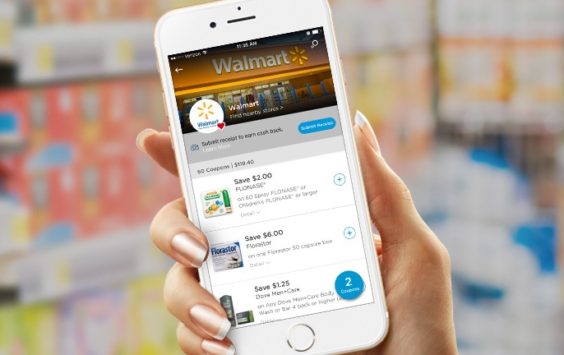
Have you ever seen or read about a great coupon offer, only to find it wasn’t showing up in your digital coupon account or printable coupon gallery by the time you went to clip it? It’s even worse when this happens while you’re in the grocery store, with the product in your hand, using your phone to try to download that digital coupon you know was just there a few hours ago…
Well, one of the largest digital coupon providers wants to make sure that doesn’t happen anymore. Coupons.com owner Quotient Technology is changing the economics of how it works with manufacturers that offer coupons, to help ensure that more of their offers are available for longer.
The change involves the “clip fees” that Quotient and other digital coupon platforms charge manufacturers. Manufacturers pay a small fee for each printable coupon that’s printed, and each digital coupon that’s clipped – regardless of whether those coupons are ever actually redeemed. Once the offers hit the print or clip limit that the manufacturer has set, they disappear and aren’t made available to anyone anymore.
So Quotient is now offering its advertisers an alternative – a pay-per-redemption plan instead of pay-per-clip. That means you can clip and print to your heart’s content (subject to the usual limits) without costing manufacturers a dime until you actually use the coupon. And since the manufacturer doesn’t have to pay up front for all the coupons that people grab as soon as they show up, the coupons will remain available for everyone to print or clip at their leisure.
Quotient calls it an “always on” strategy.
“Right now, what’s happening is for brands that are not always on, they limit the number of clips and that starts to run out,” Quotient CEO Mir Aamir told investors this week. “And more and more as the demand for coupons has been increasing, that’s been running out much earlier in the month than towards the end of the month. Always-on has a coupon available for the whole time of the month. And that’s really, really good for consumer satisfaction, shoppers, retailers love it, they put merchandising behind it, they feature it in their e-mails and weekly circulars and so on.”
So stores will be able to advertise deals involving available digital coupons, without worrying that they’ll end up with egg on their face and angry customers if the coupon disappears after their ads are already printed. And coupon blogs can promote new offers without having to go back and mark them as “no longer available”, lest they disappoint readers who show up late and wonder where the deal went.
Up until now, to keep coupons from vanishing on you, your best bet has been to pounce on any good offer you think you might use at some point, and go ahead and print or load it to your digital coupon account – whether or not you even need it right now. If you end up not using it, what’s the harm in having it, just in case?
From the manufacturers’ perspective, they end up paying for loads of clipped and printed coupons that never get used. And if a popular coupon disappears in a matter of days, or even hours, they’re left with a lot of disappointed deal-seekers – not to mention the fact that they’ve blown their monthly budget on an offer that’s out of sight, out of mind for the rest of the month.
By shifting from pay-per-click to pay-per-redemption, Quotient is also insulating manufacturers from having to subsidize various types of coupon fraud. Quotient has gone after users who’ve come up with ways to bypass printable coupon limits and generate a virtually unlimited supply of unique prints, which they then sell online – because manufacturers have to pay for each one of those coupons that’s printed, and the supply ends up running out. Similarly, Quotient has cracked down on anyone who tries to offer a “clip all” digital coupon function – because every manufacturer whose coupon is clipped has to pay for that, too.
Quotient has been experimenting with the new pricing plan for a while, and now plans to offer it to all advertisers in the coming year, “thereby increasing the supply of coupons” for all users, Aamir said. “We believe this step is another example of our innovative efforts to date, to speed the transformation of the industry.”
That “transformation” effort involves convincing coupon providers to shift more of their offers from paper to digital. Quotient hopes its new pricing plan is an attractive alternative to running a coupon in the Sunday newspapers’ free-standing inserts (known as FSIs). Why pay a flat fee to blanket the country with printed coupons, only a tiny fraction of which will ever get used, if you can instead offer more relevant and targeted paperless coupons via Quotient’s platforms, without having to pay until they’re redeemed?
“We are seeing more and more brands spend less on FSI paper coupons and move it into digital,” Aamir said. “We are seeing some brands get out of FSI completely.”
Brands are also making more offers available as purely digital coupons instead of printables. Quotient says this past quarter, paperless transactions grew 69% over the same period last year, while printable coupon transactions declined 12%.
As it continues its digital drumbeat, Quotient is even trying to drag Walmart kicking and screaming into the paperless era. Walmart only accepts paper coupons and doesn’t offer digital coupons. So Quotient is heavily promoting its back-door way to offer digital discounts to shoppers at the country’s largest retailer, through the Coupons.com app.
By using the app’s receipt-scanning rebate function, enabled via this year’s absorption of the Shopmium app, Walmart shoppers (and those who frequent other stores that don’t accept digital coupons) can take advantage of the same digital offers that are available to shoppers at stores with load-to-card coupon programs. Instead of getting a digital discount at the register, you submit an image of your receipt and get cash back, with no minimum cash-out threshold.
To promote the app to Walmart shoppers, Coupons.com has been offering 100% cash back on a rotating selection of items purchased at Walmart, like eggs, milk and bananas. It’s also thrown in some exclusive branded offers like $1 off any Coca-Cola product purchased at Walmart.
By giving Walmart shoppers an appetite for paperless coupons, Quotient may well hope those shoppers will start pressuring their favorite retailer to offer digital discounts that don’t require them to go through the trouble of scanning their receipts.
Digital coupons at Walmart? That’s wishful thinking right now. But digital coupons for everyone else that don’t disappear before the end of the month? That’s about to become reality. So the next time you see a great coupon offer, you may not need to drop everything to grab it immediately – if Quotient has its way, that coupon won’t be going anywhere anytime soon.
Image source: Quotient Technology










